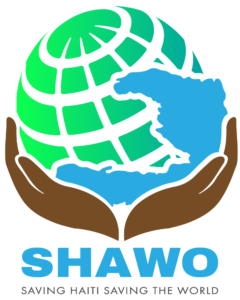Let’s Simplify Genetics
It’s like a recipe-writing project.
Why? Life builds. In order to be born, to grow, to replace what is dead or worn out (wear and tear). Life is made by the Word, a silent word, written, instantaneous and magical—that is, one that acts by itself or is activated by a signal triggered at the right time.
The analogy of the library, grammar, and reading:
Each of our cells (which is a “little version of ourselves”) carries within its nucleus a miniature library inherited half and half from our parents. This is what is called our genetic inheritance. It ensures existence, growth, the replacement of worn-out materials, the reproduction of the entire species, and lifespan. In biology, this library is called the genome.
Chromosomes are the compartments in the library.
These compartments are unequal. So are the chromosomes.
The human body has 46 of them, or 23 pairs—23 from the mother, 23 from the father. Two of these pairs are responsible for everything concerning sex; these are the X and Y chromosomes.
The magical books that write the recipes are the genes.
Genes are the books that contain the recipes. And what are the recipes? They are our proteins.
And now, grammar! The art of writing well.
Let’s recall the little childhood phrase:
“To speak and to write, we use sentences; sentences are made of words; written words are made of letters.”
There are 26 letters in the French alphabet.
It is the same with the texts in our recipe books inside the cell—or more precisely, inside the nucleus. The nucleus is comparable to a room filled with books and ultra-sophisticated photocopying machines called enzymes, capable of reading, copying, and transferring!
Get ready to follow the comparison of texts, letters, words, sentences—all magical—and even punctuation marks!
Let’s state right away that the texts (DNA) magically draw upon words (codons)—sequences of 3 nucleotides, which are themselves the letters of the alphabet (A, C, G, T)—to form sentences (exons, which give meaning to the information, i.e., the text).
The punctuation marks are called introns; they separate, promote, accelerate, soften, or stop—just like in fluent reading or a well-written and well-delivered speech. Even the difference between uppercase and lowercase letters is emulated here.
The analogy of the Soccer World Cup
First, the players: the proteins.
First oath: die if you are one too many (apoptosis—“too many men on the ice,” in hockey, for example).
Disobedience, mutiny, greed = cancer.
The golden rule: complementarity.
Each player is a protein. They are exceptional, specialized, magical—even deadly.
Example: a few hundred grams (disputable) of tetanus toxin could immobilize much human life on planet Earth.
The playing field is limited, marked.
There is functional segregation in biology, but:
All for one, one for all.
Individual potential is limited (telomere—analogy of the filter in a lit cigarette)
The referee or referees
The line judges (BRCA1, BRCA2, P53, E6, E7, etc.),
for breast and cervical cancer, respectively.
Mutation = referees or line judges who are biased, negligent, ignorant of the rules, or simply corrupt.
The supreme law in Biology—and perhaps in all Creation:
Homeostasis, i.e., harmony, balance, complementarity, and recycling.
Jean-Baptiste L. Charlot, MD, FACOG
Miami, August 5th, 2025
